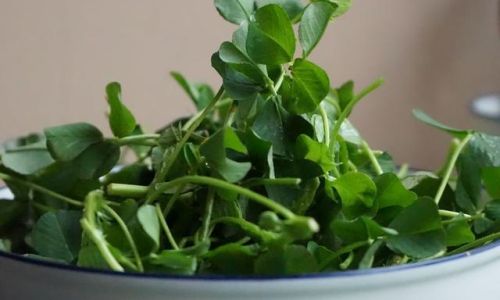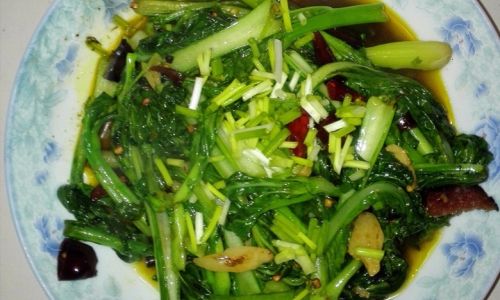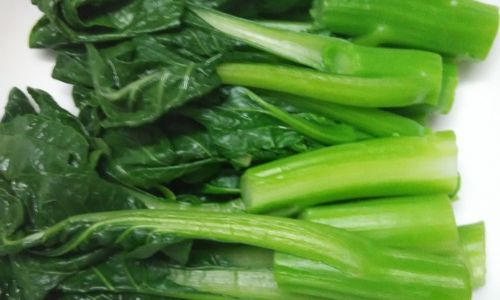Table of content
Grass head, known in culinary circles as Lespedeza bicolor or Chinese clover, is a leafy green vegetable celebrated for its delicate texture, mild bitterness, and vibrant color. Often overlooked in Western kitchens, this humble ingredient is a staple in Chinese cuisine, particularly in regions like Shanghai and Jiangsu. Packed with nutrients and bursting with earthy flavor, grass head can transform simple dishes into culinary delights when prepared correctly. This article explores the nuances of selecting, cooking, and savoring grass head, offering a range of recipes and expert tips to elevate your cooking repertoire.
Understanding Grass Head: A Brief Introduction
Grass head belongs to the legume family and is harvested in early spring when its leaves are tender and flavorful. The plant’s young shoots and leaves are prized for their nutritional profile, including vitamins A, C, and K, as well as iron and calcium. Its slightly bitter taste, reminiscent of spinach or arugula, makes it a versatile canvas for various cooking methods. In Chinese cooking, grass head is often stir-fried, blanched, or incorporated into soups, where its unique flavor profile shines.
Selecting and Preparing Grass Head
The key to a memorable grass head dish begins at the market or grocery store. Look for bunches with crisp, bright green leaves and firm stems. Avoid wilted or yellowing leaves, as they indicate age or improper storage. Once home, trim the tough ends of the stems and discard any damaged leaves. Rinse the grass head thoroughly under cold water, gently swirling to remove dirt or grit. Some cooks prefer to soak the leaves briefly in salted water to eliminate pests, though this step is optional.
Cooking Techniques: Balancing Flavor and Texture
Grass head’s delicate nature requires careful handling to preserve its texture and color. Here are the most effective cooking methods:
Stir-Frying: The Classic Approach
Stir-frying is the quintessential way to prepare grass head, as it retains the vegetable’s vibrant hue and crispness. Use a wok or large skillet over high heat, adding a neutral oil like peanut or vegetable oil. Garlic, ginger, or dried chilies are common aromatics, added first to infuse the oil. Toss the grass head briefly—no more than 2-3 minutes—until just wilted. A splash of Shaoxing wine or a drizzle of oyster sauce can add depth, while a pinch of sugar balances the bitterness.

Blanching: For Soups and Salads
Blanching softens grass head’s fibrous texture, making it ideal for soups or chilled salads. Submerge the leaves in boiling water for 30 seconds, then transfer to an ice bath to halt cooking. This method mellows the bitterness and preserves the green color. For a refreshing salad, toss blanched grass head with sesame oil, soy sauce, and toasted sesame seeds.
Sautéing with Fatty Ingredients
Grass head pairs beautifully with richer ingredients like bacon, lard, or duck fat. Render the fat in a pan, then add the greens, tossing to coat. The fat tempers the bitterness, creating a harmonious balance. This method works well in one-pot dishes or as a side for roasted meats.
Incorporating into Soups and Stews
Add grass head toward the end of cooking soups or stews to retain its texture. Its earthy flavor complements clear broths, tofu, or mushroom-based soups. A handful of chopped grass head can elevate a simple miso soup or chicken congee.
Recipes to Savor
Recipe 1: Stir-Fried Grass Head with Garlic and Shaoxing Wine
Ingredients:
- 400g fresh grass head, trimmed
- 3 garlic cloves, minced
- 1 tbsp peanut oil
- 1 tbsp Shaoxing wine
- 1 tsp oyster sauce
- 1/4 tsp sugar
- Salt to taste
Instructions:
- Heat the oil in a wok over high heat. Add garlic and stir-fry until fragrant (30 seconds).
- Toss in the grass head and stir-fry for 1 minute.
- Drizzle with Shaoxing wine and oyster sauce. Add sugar and a pinch of salt.
- Stir-fry for another minute until the leaves are wilted but still vibrant. Serve immediately.
Recipe 2: Grass Head and Tofu Soup
Ingredients:
- 200g grass head, chopped
- 1 block soft tofu, cubed
- 4 cups chicken or vegetable broth
- 1 tbsp ginger, julienned
- 1 tbsp soy sauce
- 1 tsp sesame oil
- White pepper to taste
Instructions:
- Bring the broth to a simmer. Add ginger and tofu, cooking for 5 minutes.
- Stir in the grass head and cook until wilted (1-2 minutes).
- Season with soy sauce, sesame oil, and white pepper. Serve hot.
Recipe 3: Spicy Grass Head with Dried Shrimp
Ingredients:

- 300g grass head
- 1 tbsp dried shrimp, soaked
- 2 red chilies, sliced
- 1 tbsp vegetable oil
- 1 tsp fermented black beans
- 1/2 tsp sugar
Instructions:
- Heat oil in a pan. Add dried shrimp and chilies, stir-frying until fragrant.
- Toss in the grass head and black beans. Stir-fry for 2 minutes.
- Add sugar and a splash of water. Cook until the leaves are tender. Adjust seasoning and serve.
Pairing Suggestions: Enhancing the Flavor
Grass head’s mild bitterness pairs well with umami-rich ingredients like mushrooms, aged cheese, or cured meats. Try it alongside grilled salmon, roasted duck, or stir-fried mushrooms. For a vegetarian twist, serve it with crispy tofu or tempeh. In noodle dishes, toss blanched grass head with soy-based sauces and fresh herbs for a refreshing contrast.
Health Benefits: A Nutritional Powerhouse
Beyond its culinary appeal, grass head offers a wealth of health benefits. Rich in antioxidants, it supports immune function and reduces inflammation. Its high fiber content aids digestion, while iron and vitamin K promote blood health and bone strength. Regular consumption may also contribute to healthy skin and hair, thanks to its vitamin A content.
Cultural Significance: A Spring Delicacy
In Chinese culture, grass head is synonymous with spring, often featured in seasonal menus to celebrate renewal. The dish jiu cai cao tou (grass head stir-fried with Chinese chives) is a Lunar New Year favorite, symbolizing prosperity and growth. Its inclusion in traditional feasts underscores its cultural and culinary importance.
Common Mistakes to Avoid
- Overcooking: Grass head turns mushy and loses its vibrant color if cooked too long. Aim for tender-crisp texture.
- Skipping Aromatics: Garlic, ginger, or chili elevate the dish’s depth. Avoid plain cooking.
- Excessive Seasoning: The vegetable’s delicate flavor can be overpowered. Use light hands with soy sauce or salt.
- Ignoring Bitterness: Balance bitterness with sugar, wine, or fatty ingredients.
Storage Tips: Keeping It Fresh
To extend grass head’s shelf life, wrap it in a damp paper towel and store in a plastic bag in the refrigerator. Use within 3-4 days for optimal freshness. Avoid washing until ready to cook, as excess moisture accelerates spoilage.
Conclusion: Embracing Grass Head’s Versatility
Grass head is more than a vegetable—it’s a bridge between tradition and innovation. Whether stir-fried, blanched, or simmered in a broth, its unique flavor profile invites experimentation. By mastering the techniques outlined here, you’ll unlock a world of culinary possibilities, transforming a simple green into a dish that delights the senses and nourishes the body. So next time you spot this leafy treasure at the market, don’t hesitate to bring it home—your taste buds will thank you.





0 comments